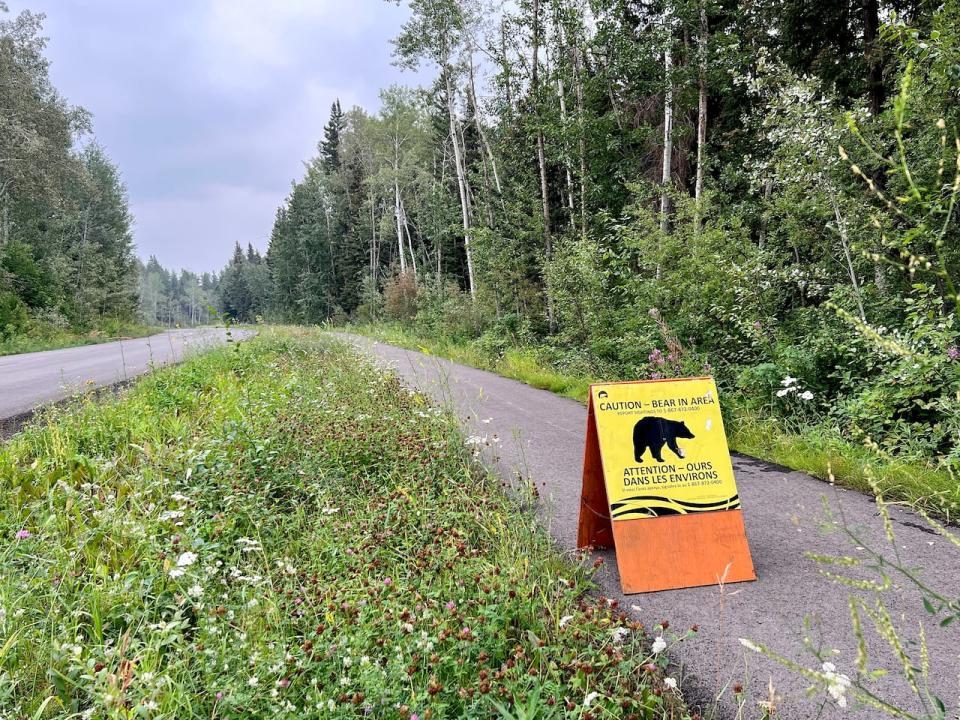Mary Adele Chocolate remains to be slightly bit rattled after seeing a relations of bears coming into the waste outdoors her dwelling in Gam èti, N.W.T., slightly over per week again.
“I know bears can do anything, you know, they can break the window, they can break the door, or they can do anything, if they’re hungry,” she claimed.
“And I’m scared of that. I have children and our grandchildren here all the time.”
Chocolate claimed there have been 3 bears seen round Gam èti that day, and she or he claims that wild animals policemans wound up capturing amongst them– contributing to a grim tally of despatched off bears within the space.
Since 2021, quite a few black bears have really been eradicated by N.W.T. wild animals authorities. The quantity overshadows the number of bears which have really moderately been recorded and transferred, removed from a neighborhood.
According to statistics from the realm’s Department of Environment and Climate Change first reported by Cabin Radio, 401 black bears had been eradicated by wild animals policemans in between 2021 and final month.
The Sahtu space had the best attainable number of bears eradicated as a result of 2021 at 132, adhered to by the South Slave the place 116 have really been eradicated. In the Dehcho and North Slave, the number of black bear fatalities had been 101 and 50 particularly, whereas in the exact same period of time the Beaufort Delta videotaped 2 black bear fatalities.
The simply areas the place black bears had been transferred over that length remained within the North Slave andSouth Slave Since 2021, 39 bears have really been transferred in accordance with the federal authorities stats.
Julian Sabourin, that advantages the ambiance division as a renewable vitality police officer in Yellowknife, claims just a few bears acceptable “candidates for relocation.”
“It can’t be habituated to garbage. They can’t have done anything maybe aggressive towards human beings,” he claimed.
“But if they’re getting into garbage, they’re still scared of people, vehicles, and then they do go into the trap, then that’s usually a more suitable candidate to be relocated.”
An occasion, he claims, may very well be a bear seen “just hanging out on the outskirts” of Yellowknife but not presenting an evident danger to people. That pet would doubtless be recorded and transferred, not despatched off, Sabourin claims.
“That’s a situation where we would most likely set up the trap in hopes to catch the bear, and then just take it further away from Yellowknife or any other communities,” Sabourin claimed.


An indication alerts of bear job on a path close to Fort Smith, N.W.T., July 2023. (Carla Ulrich/ CBC)
Sabourin claims there’s nonetheless an entire lot to study extra about what takes place after a bear has really been transferred. He claims preservation policemans intend to start putting ear tags or collars on recorded bears to trace their motions after they’re launched.
“I think being able to do work with our biologists to be able to collar them will be able to give us a way better answer to understand how they do after relocation,” he claimed.
Sabourin claimed the easiest means for people to remain away from troublesome bear experiences is to always take care concerning something on their residential property or camp web site that will usher in a bear, equivalent to meals, waste and recycleables.
“We obviously are still part of the boreal forest. So there’s always going to be bears in and around the community,” Sabourin claimed.
“For the most part, people are doing a good job when they’re on the land managing their attractants. However, there’s always room for improvement. So I just cannot stress that enough, that people are always being mindful of managing their attractants, even if they are living in residential areas.”
According to the ambiance division there have really been 7 extreme bear-human communications within the N.W.T. as a result of 2010. Two of these communications resulted in human casualties– within the Mackenzie Mountains close to Norman Wells in 2014 and in Tulita in 2019– 4 in accidents, and one with out accidents.
Black bears had been likewise in command of 2 numerous different fatalities within the N.W.T. within the years previous to that– at Prosperous Lake in 2001 and at Nonacho Lake in June 2005.

